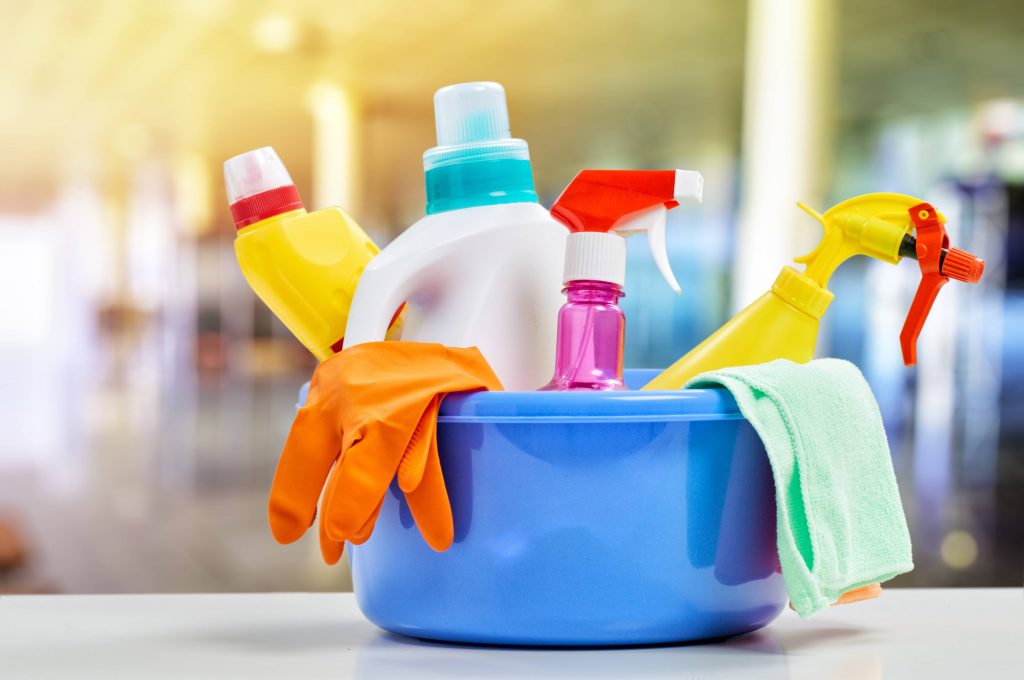5 Most Common Causes of Marble Countertop Stains
5 Most Common Causes of Marble Countertop Stains
Marble countertops are a staple in interior design, decorating both kitchens and bathrooms around the world. Marble is one of the most popular materials available and its natural beauty makes it easy to see why so many homeowners choose this stone for their homes. However, the biggest drawback of marble is its reputation as a high maintenance material, due to its proneness to staining.

However, even though marble is more delicate than some of the alternatives, with the right products, a proper cleaning and sealing routine can protect its glossy surface. While it’s possible to remove most stains, it’s an even better decision to prevent them altogether. The first step to protecting marble countertops from stains, is understating what causes the staining in the first place.
1. Common Household Cleaners

If you have marble countertops, its best to steer clear of most household cleaners that can be purchased at your local store. Most common cleaning products contain chemicals (both synthetic and organic) such as solvents and pigments which are capable of breaking down the protective seal of natural stone when they come into contact with it. In addition to dulling the surface, these cleaners can lead to stains and etching on the marble. Many of these products, especially green or red all-purpose cleaners, also contain coloring that is able to penetrate the protective seal of the stone and seep into its pores, coloring them often irreversibly.
2. Tannins
Tannins are organic chemicals that act as a pigmentation agent. Tannins are very widespread in food and drink, most commonly found in tea and coffee as well as wine and beer, some fruit juices, berries, pomegranates, most nuts and legumes and in some herbs and spices. When beverages containing tannins are heated, the tannin levels increase, which also increases the potential risk of staining the marble countertop. Exercise caution when handling tannin-rich beverages and clean up any spills as soon as they occur to minimize the chances of permanent damage.
3. Beta-Carotene

Beta-carotene is a pigment from the carotene family which gives a rich orange, yellow or red coloring to carrots, apricots, squash, cantaloupe and some peppers. While it’s also a precursor to Vitamin A which makes it essential in your diet, beta-carotene’s strong pigmentation makes it a threat to marble surfaces which can be stained yellow or orange from exposure to the compound. The good news is, having properly sealed marble and cleaning spills up as soon as they happen as well as using protective surfaces such as wooden boards when chopping beta-carotene rich fruits and vegetables will help protect your countertops from stains.
4. Vinegar and Ammonia
If you have ever tried to make the switch from store-bought cleaning products to homemade ones, you already know that vinegar is the most common ingredient in natural cleaning products. While it is effective on most surfaces, it should not be used on marble countertops as its high acidity will cause etching of the stone. On the other hand, ammonia has an alkaline nature and it can be very corrosive. Using ammonia on marble surfaces will quickly weaken their protective seals and leave them vulnerable to permanent damage. The best choice for cleaning marble countertops is a pH balanced cleaner with a formula that is gentle enough to not damage the stone.
5. Hard Water

Hard water is a term used to describe water with a high mineral content, especially a high concentration of calcium, bicarbonates, magnesium carbonates and sulfates. Many households throughout the world have hard water, and if yours is one of them you’ve definitely notices the buildups it can cause. A hard water buildup on a marble surface can easily stain it, and it can also be very difficult to remove without causing further damage to the stone. Using water softeners is one solution to this problem.